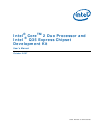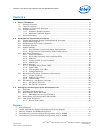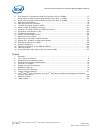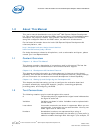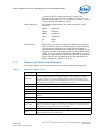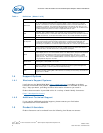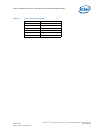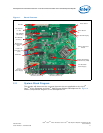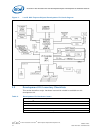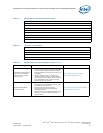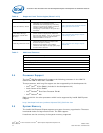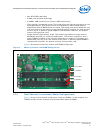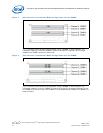
Intel Core 2 Duo Processor and Intel Q35 Express Chipset—About This Manual
Intel
®
Core
TM
2 Duo Processor and Intel
®
Q35 Express Chipset Development Kit
User’s Manual October 2007
6 Order Number: 318476001US
1.0 About This Manual
This user’s manual describes the use of the Intel
®
Q35 Express Chipset Development
Kit. This manual has been written for OEMs, system evaluators, and embedded system
developers. All jumpers, headers, LED functions, and their locations on the board,
along with subsystem features and POST codes, are defined in this document.
For the latest information about the Intel
®
Q35 Express Chipset Development Kit
reference platform, visit:
http://developer.intel.com/design/intarch/devkits/
index.htm?iid=embed_body+devkits
For design documents related to this platform, such as schematics and layout, please
contact your Intel Representative.
1.1 Content Overview
Chapter 1.0, “About This Manual”
This chapter contains a description of conventions used in this manual. The last few
sections explain how to obtain literature and contact customer support.
Chapter 2.0, “Development Kit Hardware Features”
This chapter provides information on the development kit features and the board
capability. This includes the information on board component features, jumper settings,
pin-out information for connectors and overall development kit board capability.
Chapter 3.0, “Setting Up and Configuring the Development Kit”
This chapter provides instructions on how to configure the evaluation board and
processor assembly by setting BTX heatsink, jumpers, connecting peripherals,
providing power, and configuring the BIOS.
1.2 Text Conventions
The following notations may be used throughout this manual.
# The pound symbol (#) appended to a signal name indicates that
the signal is active low.
Variables Variables are shown in italics. Variables must be replaced with
correct values.
Instructions Instruction mnemonics are shown in uppercase. When you are
programming, instructions are not case-sensitive. You may use
either upper-case or lower-case.
Numbers Hexadecimal numbers are represented by a string of
hexadecimal digits followed by the character H. A zero prefix is
added to numbers that begin with A through F. (For example, FF



